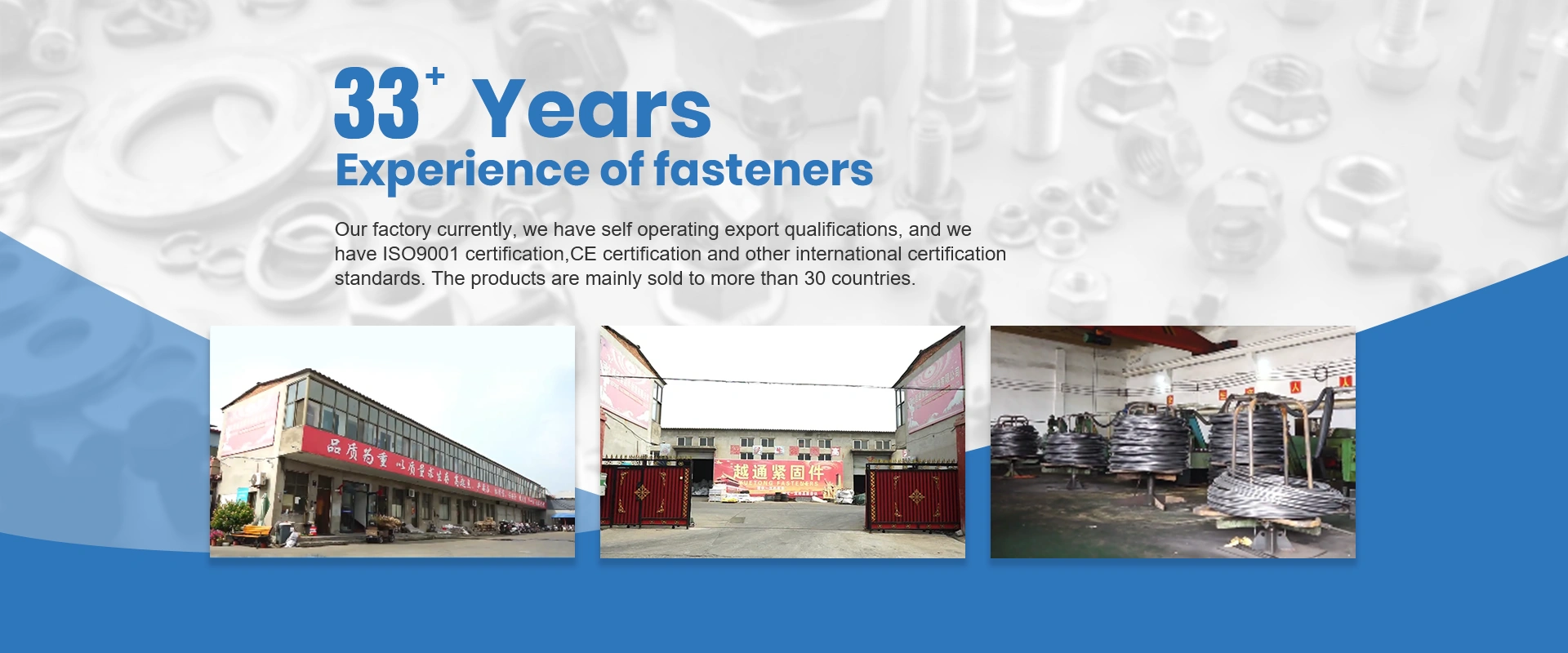Nov . 18, 2024 09:48 Back to list
High Strength Threaded Rod for Enhanced Load-Bearing Applications in Engineering and Construction
Understanding High Tensile Threaded Rods Applications and Benefits
High tensile threaded rods are essential components in various structural and industrial applications. These rods, characterized by their high strength and durability, are designed to withstand significant loads and stresses, making them ideal for demanding environments. This article delves into the features, applications, and advantages of high tensile threaded rods, highlighting why they are a preferred choice in construction and manufacturing industries.
What is a High Tensile Threaded Rod?
A threaded rod is a long, cylindrical piece of metal that is fully threaded along its length. High tensile threaded rods are specifically manufactured from high-strength materials, such as carbon steel, alloy steel, or stainless steel, which can endure higher levels of tension and shear forces without yielding or failing. These rods are integral for applications that require secure anchoring and support, often functioning in conjunction with nuts or other fastening systems.
Key Features
1. Tensile Strength High tensile threaded rods are designed to offer superior tensile strength, usually exceeding 1000 MPa, depending on the material grade. This capability ensures that they can support heavier loads and resist deformation despite external forces.
2. Corrosion Resistance Many high tensile threaded rods come with protective coatings or are made from corrosion-resistant materials, such as stainless steel. This property is crucial for applications in harsh environments, including marine and chemical processing industries.
3. Versatility High tensile threaded rods can be manufactured in various lengths and diameters, making them suitable for multiple applications, from construction projects to machinery assembly.
4. Precision Threading The threading on these rods is critical for ensuring a good grip with nuts and other fasteners. Precision manufacturing processes are utilized to create uniform threads, which enhance the overall reliability of the fastening system.
Applications
High tensile threaded rods find utility across many sectors
high tensile threaded rod

- Construction They are widely used in anchoring systems, including foundations, bridge constructions, and prefabricated structures. These rods help connect structural elements like beams and columns, ensuring stability and structural integrity. - Manufacturing In industrial settings, high tensile threaded rods support machinery and equipment, acting as fasteners that hold assemblies together. They are commonly used in conveyor systems, production lines, and other heavy-duty machinery applications.
- Oil and Gas Industries In this sector, threaded rods are used to secure components of drilling rigs and pipelines, where they must withstand extreme pressures and environmental conditions.
- Automotive High tensile threaded rods are essential in vehicle assembly, providing reliable connections for various parts, including the chassis and engine components.
- Renewable Energy The growing field of renewable energy employs high tensile threaded rods in the construction of wind turbines and solar panel mounts, where they must withstand significant stresses from environmental forces.
Advantages
1. Enhanced Safety The high strength and durability of these rods contribute to the overall safety of structures. They help prevent failures that could lead to catastrophic consequences, thus ensuring the protection of both people and property.
2. Cost-Effectiveness While high tensile threaded rods may have a higher upfront cost compared to standard threaded rods, their longevity and reduced need for maintenance or replacement can lead to long-term cost savings.
3. Easy Installation The standardized dimensions and threading of high tensile rods facilitate straightforward installation and assembly processes, saving time and labor during construction or manufacturing.
4. Adaptability These rods can be customized to meet specific engineering demands, including variations in length, diameter, and material composition. This adaptability ensures that they can be tailored for unique projects or applications.
Conclusion
High tensile threaded rods are indispensable in modern engineering and construction. Their strength, durability, and versatility make them a vital choice for a plethora of applications across various industries. By understanding their features and benefits, engineers and construction professionals can make informed decisions when selecting materials for their projects, ultimately enhancing the safety and integrity of their structures. As industries continue to evolve and face new challenges, the reliance on high-quality components like high tensile threaded rods is likely to grow, ensuring robust performance in the most demanding environments.


